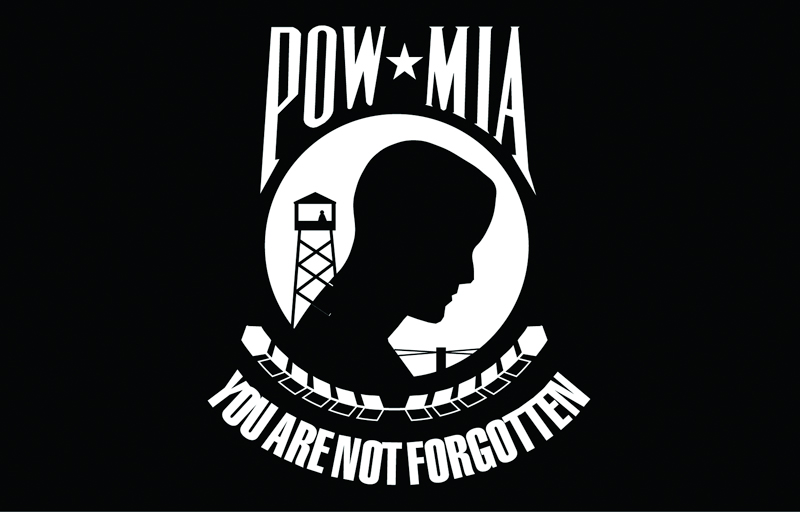
This series is an adaptation of an article that originally appeared in the August 2015 American Legion Auxiliary Magazine. Look for the remaining parts of this blog series in the days and weeks ahead. Please remember: More than 83,000 servicemembers are still classified as either prisoners of war (POWs) or missing in action (MIA).
Finding the Missing
The process for identifying a potential recovery site and the remains can be complex, according to Capt. Gary “Nick” Taylor, who recently returned from a recovery investigation in Malaysia. Taylor, the Bravo Team Leader for Task Element Hawaii for The Defense POW/MIA Accounting Agency (DPAA) — the agency born from the U.S. Department of Defense’s combination of two agencies in 2015, said an investigation team, led by a captain, will go to a site that has been identified as having remains on the ground. That team will start digging and testing to determine whether there is enough evidence for a recovery.
After further analysis of data by anthropologists, the process may be elevated to a recovery mission. During a recovery mission, numerous people — including a team leader, an analyst, an anthropologist, a linguist, and natives of the area, plus a mountaineer if necessary — will work on the recovery at the site, which can take 35 to 60 days, Taylor said. In many cases, decades have passed since servicemembers have gone missing.
As a result, potential sites often have been disturbed by people scavenging for metal or have become overgrown with plants and shrubs.
During a March 2014 assignment, Taylor said, the DPAA’s team of eight worked alongside 12 local villagers in Vietnam, comprising the total workforce on the site. “The partnership was great,” he said. “It was interesting to work with those guys. We were the visitors to the area, and they gave great advice on how to hike up the mountain to the recovery site, what to wear, how often to hydrate. We spent 45 days living in the jungle, sleeping and eating with those guys day in and day out. We appreciated their hard work.
“The site itself had a good amount of wreckage, and we were able to find obvious remains,” Taylor added. “It felt like a success.”
Dr. Denise To, a forensic anthropologist and a lab manager for the DPAA, has worked in the recovery field for Missing In Action (MIA) servicemembers for 10 years, traveling to war sites to excavate. “I’ve been to sites representing every theater, the Korean War, Vietnam … all over the South Pacific, all over Europe. I lost count after 25,” she said.
The process for identifying potential remains of MIA servicemembers is incredibly extensive, according to Dr. To. “It’s not similar to what you see on TV. Think of it as a cold, cold case.
“There’s a glut of science and a glut of data. It’s a fairly detailed and painstaking process, and there are a billion factors that can bring the house crashing down,” said Dr. To, referring to the many elements, including disturbances of nature and people, that could taint the accuracy of identification.
“We have the most top-notch scientists and procedures to ensure the accuracy of our findings,” she added. “The science starts way before we find the remains. We analyze the field location. Everything in the field is treated in the exact same way. We handle the data like we would with a homicide case, maintaining best practices.”
After careful recovery of potential remains at the site and analysis, the remains are sent to DPAA labs in Honolulu, Hawaii, or Omaha, Neb., to get processed in the same way that modern evidence is processed, Dr. To said.
She also said that it is important that each case is analyzed by another DPAA team member who was not part of the recovery team. “We do the analysis in the blind,” Dr. To said. “As human beings, we have a lot of inherent bias. If I was out on the site with Captain Taylor, and we put in blood, sweat, and tears to excavate and analyze the site, I want those remains to be our pilot. I would be more biased if I were to do that analysis.
“We need someone who knows nothing about the case to tease out all the data, without any bias. When we make an identification, we are supremely confident,” said Dr. To, noting that the process can include skeletal analysis, biological profiles, DNA analysis, X-ray analysis, dental records, and archeological materials evidence.
“The DoD also is maintaining regular updates and briefings for the families of MIA servicemembers by hosting events throughout the year. Each year, two briefings are held in the Washington, D.C. area, one for Vietnam War families and the other for surviving family members of those lost in the Korean and Cold wars. Each year, these family briefings have drawn more attendees — from 187 in 1996 to 1,290 in 2014.
In the spirit of Service, Not Self, the mission of the American Legion Auxiliary is to support The American Legion and to honor the sacrifice of those who serve by enhancing the lives of our veterans, military, and their families, both at home and abroad. For God and Country, we advocate for veterans, educate our citizens, mentor youth, and promote patriotism, good citizenship, peace and security.